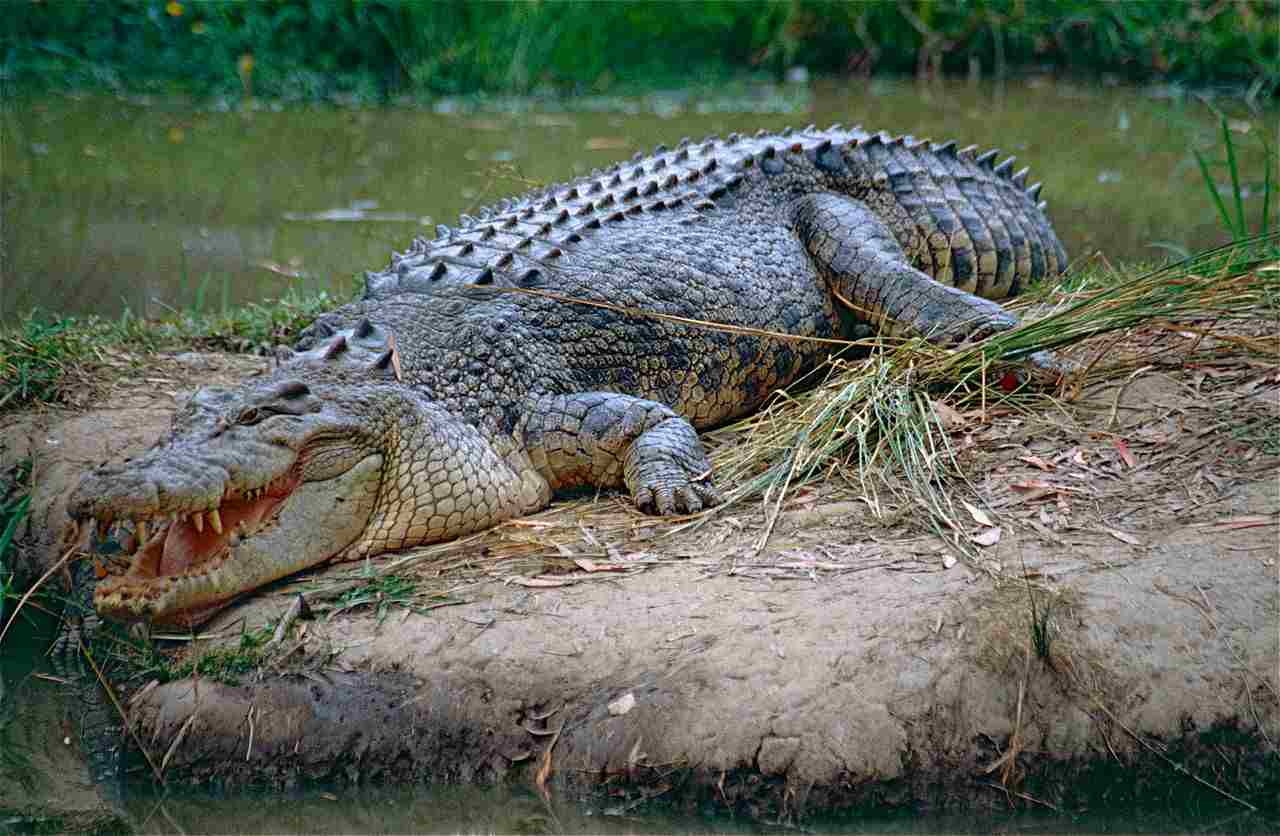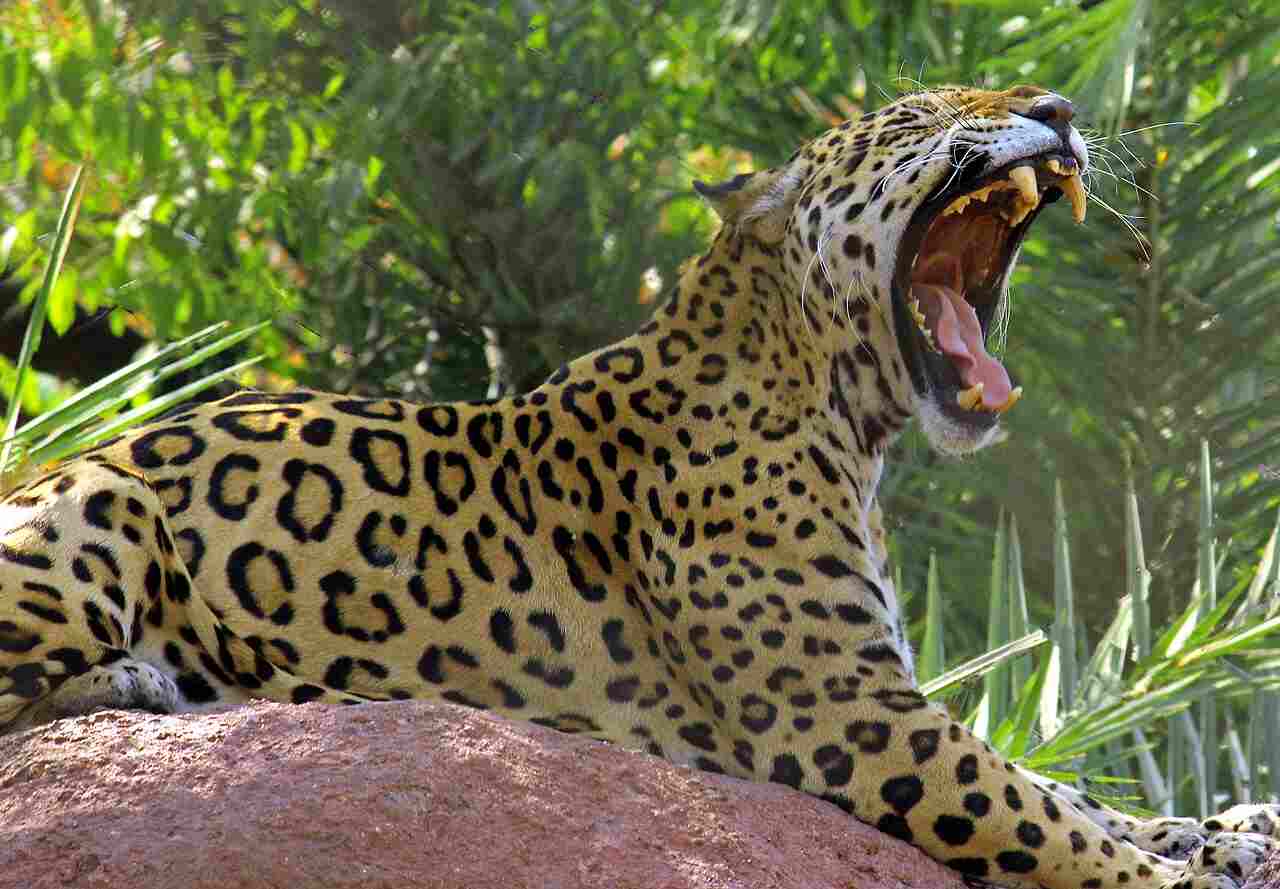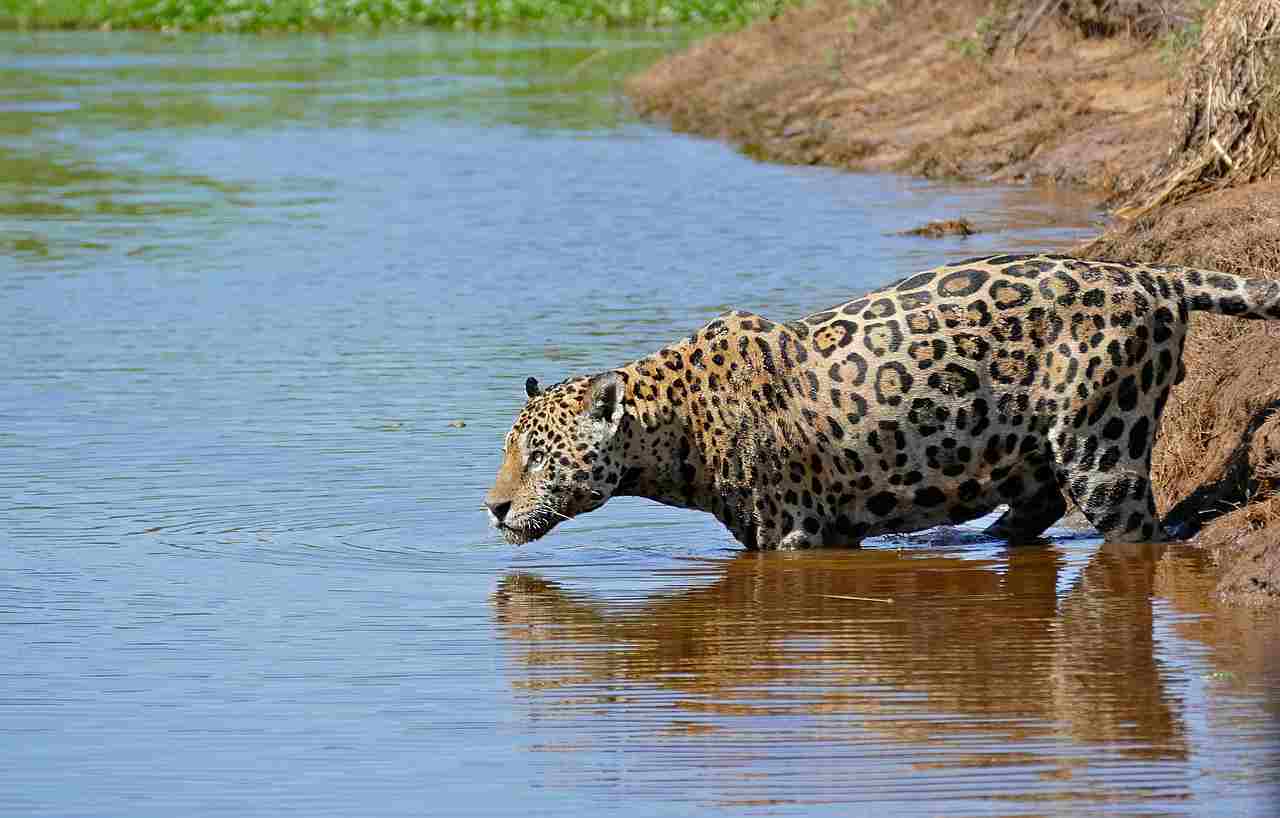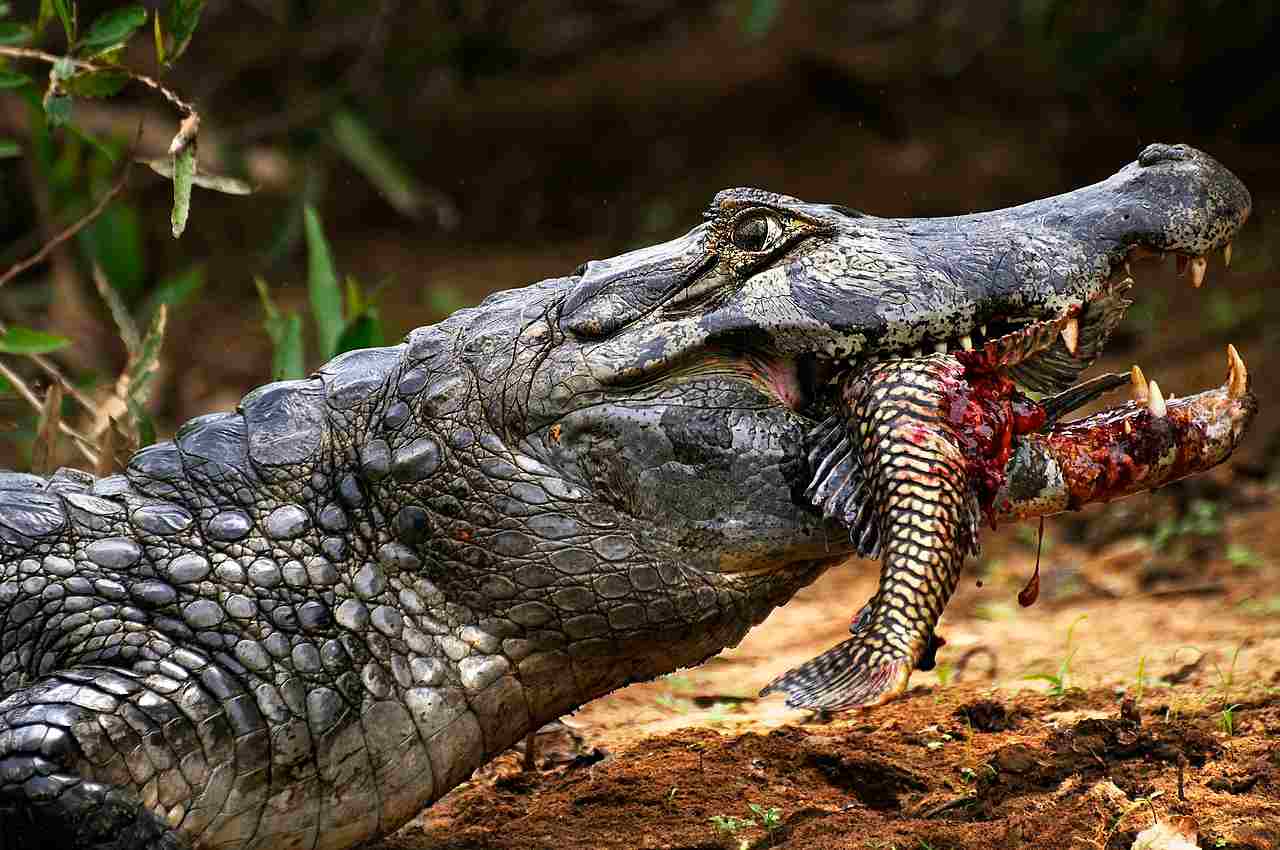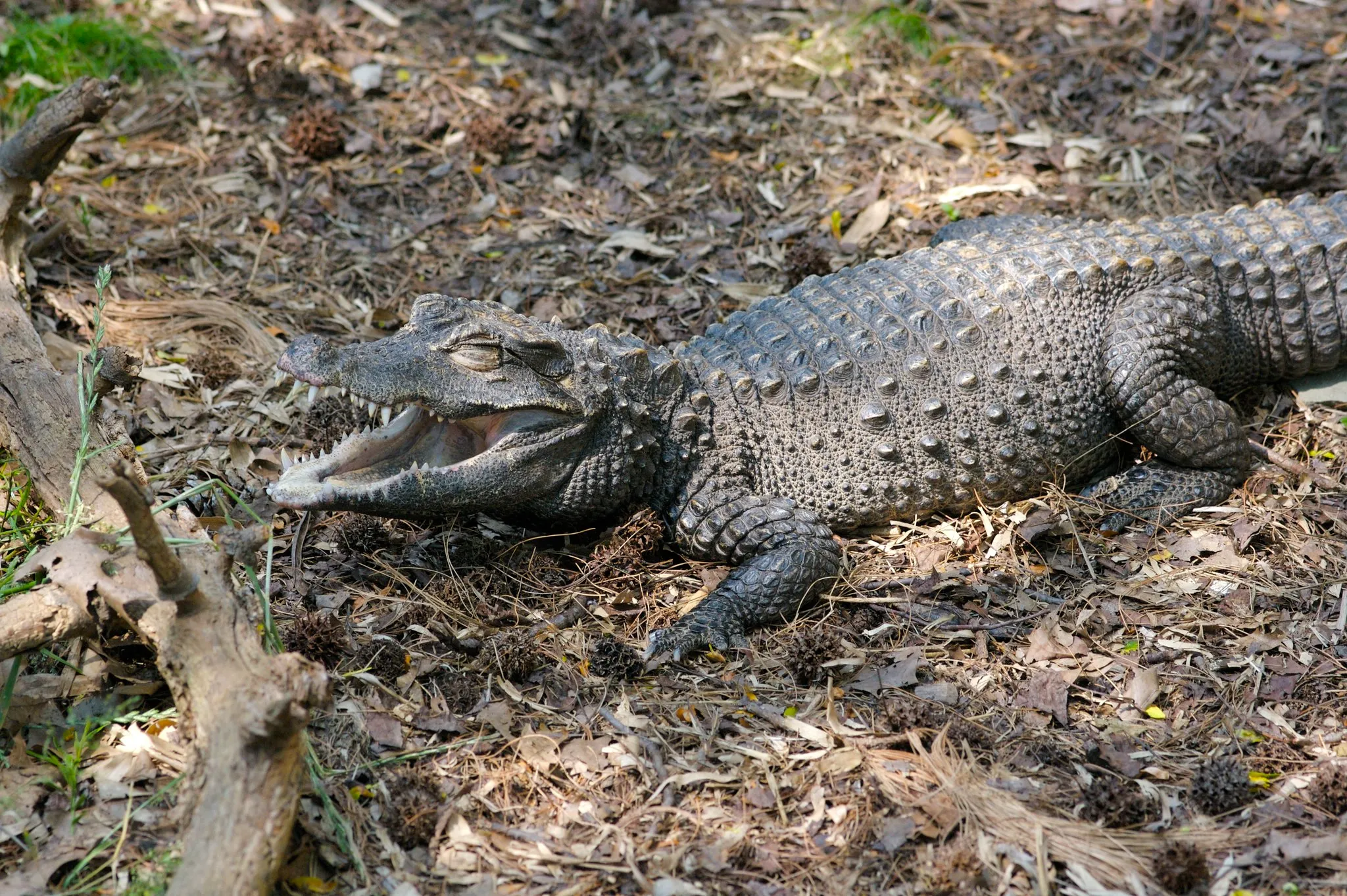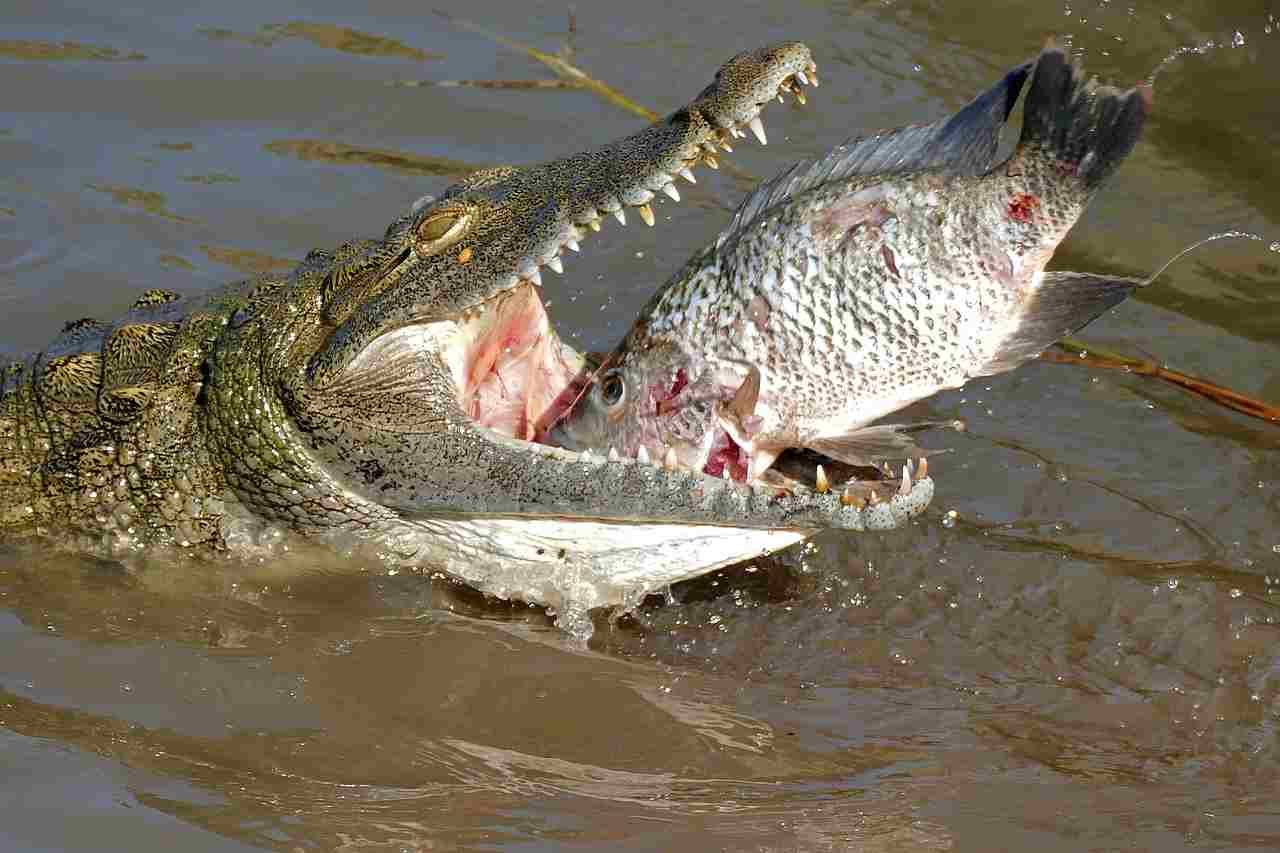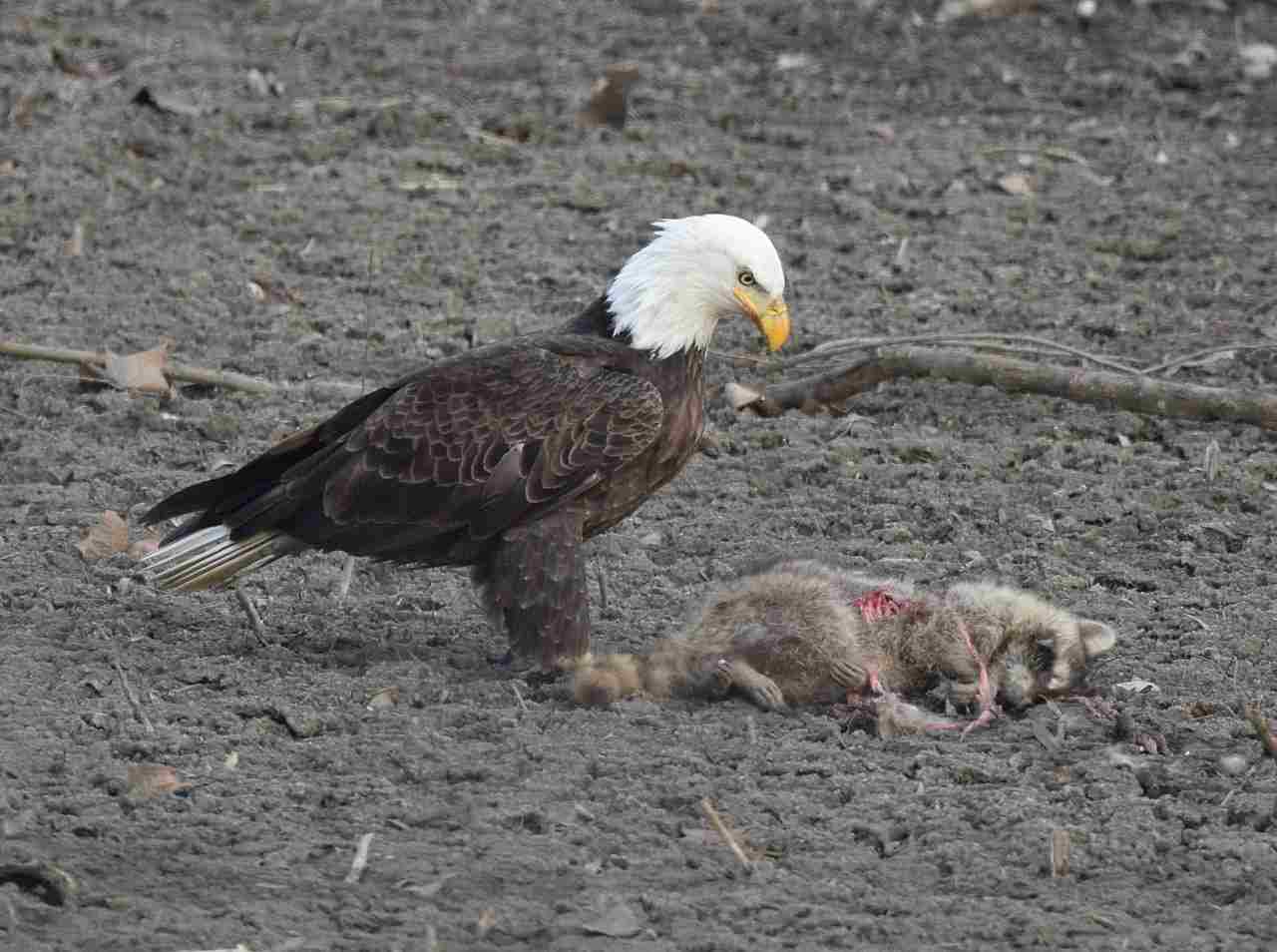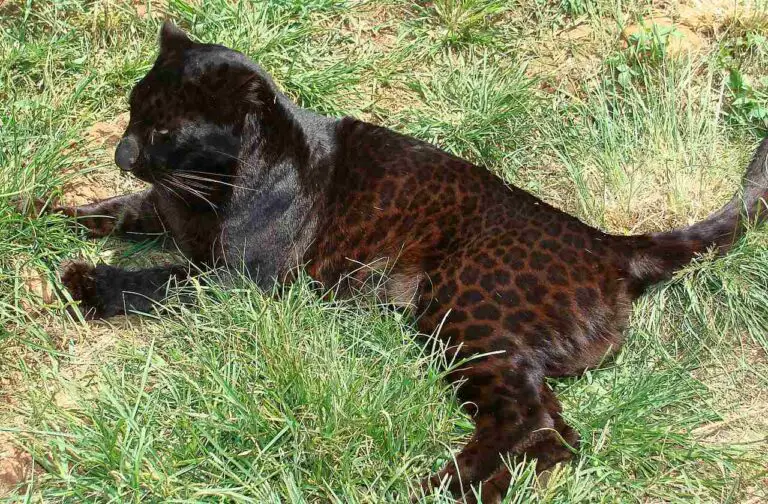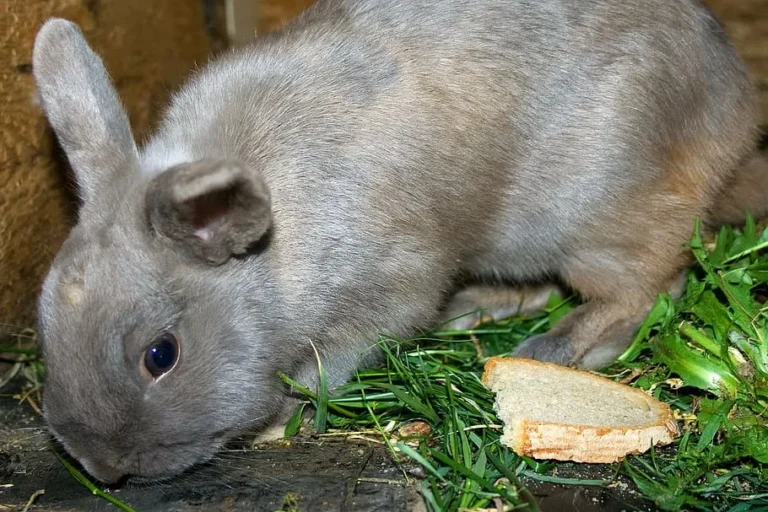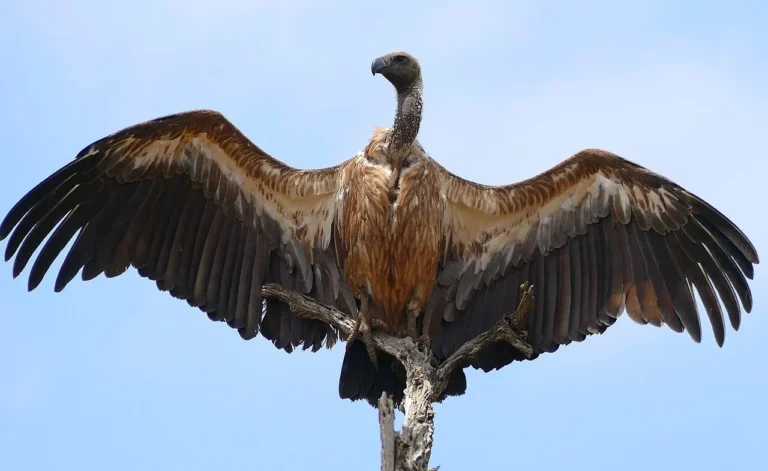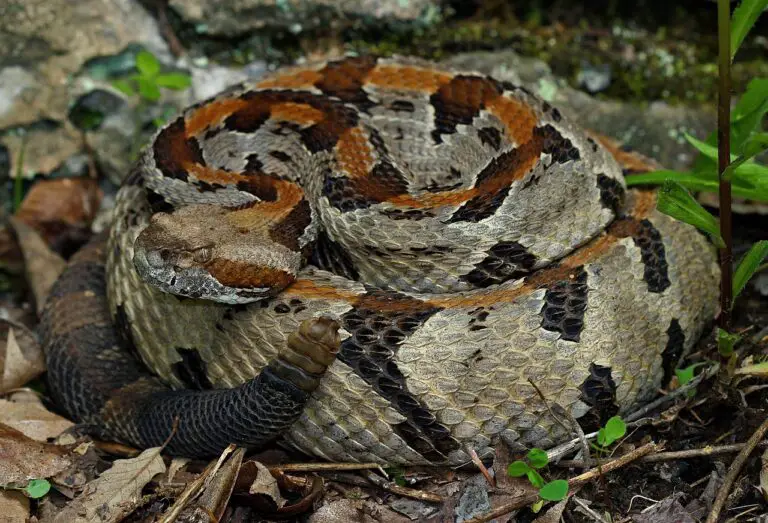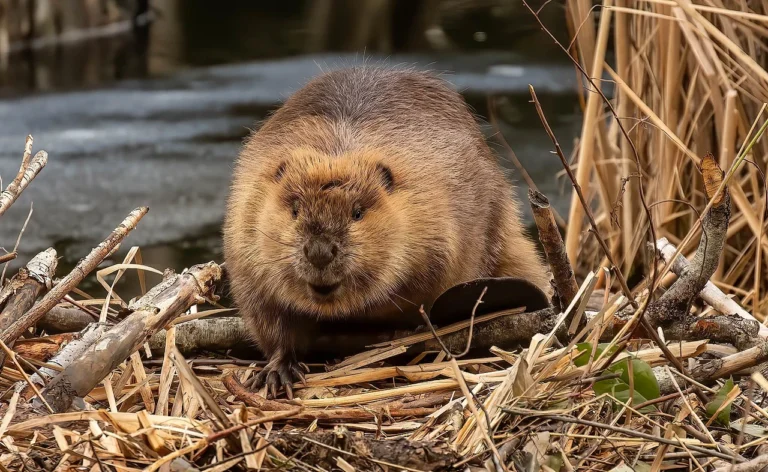5+ Quaternary Consumers in the Tropical Rainforest Discussed
Quaternary consumers in the tropical rainforest are apex predators that occupy the highest trophic level in the ecosystem. They play a crucial role in regulating prey populations, shaping ecosystem dynamics, and maintaining biodiversity. Examples include crocodiles, jaguars, green anacondas, harpy eagles, African crowned eagles, and black caimans. These apex predators exert top-down control on the ecosystem, influencing the behavior and distribution of lower trophic levels while facing threats such as habitat loss, poaching, and human disturbance.
1. Crocodile
Crocodiles are formidable quaternary consumers in the tropical rainforest, playing a crucial role in the ecosystem’s balance. These apex predators primarily inhabit freshwater habitats within rainforest regions, including rivers, lakes, and swamps. In their food web position, they feed on secondary consumers such as large fish, turtles, birds, and mammals, exerting top-down control on the population dynamics of these species.
Diet and Hunting Behavior: Crocodiles are opportunistic predators, preying on a variety of animals within their habitat. They are ambush hunters, using stealth and camouflage to surprise their prey. Their diet typically includes fish, amphibians, reptiles, birds, and mammals that venture close to the water’s edge to drink or forage.
Role in the Ecosystem: As quaternary consumers, crocodiles help regulate the populations of their prey species, preventing overpopulation of certain groups and promoting species diversity within the rainforest ecosystem. By controlling the population sizes of their prey, crocodiles indirectly influence the distribution and behavior of lower trophic levels, contributing to the overall stability of the ecosystem.
Habitat Importance: Crocodiles are keystone species in tropical rainforests, meaning they have a disproportionately large impact on their environment relative to their abundance. Their presence influences the behavior and distribution of other species, shaping the structure and function of the ecosystem as a whole.
Conservation Status: Despite their ecological importance, crocodile populations in many tropical rainforest regions face threats from habitat loss, pollution, poaching, and conflicts with humans. Conservation efforts, including habitat protection, anti-poaching measures, and community education, are essential for the long-term survival of these apex predators and the ecosystems they inhabit.
2. Jaguar
Jaguars are magnificent quaternary consumers that inhabit the tropical rainforests of Central and South America. As the largest big cat in the Americas, they play a crucial role in regulating the populations of their prey species and shaping the structure of the rainforest ecosystem.
Diet and Hunting Behavior: Jaguars are apex predators known for their powerful jaws and stealthy hunting techniques. Their diet includes a wide range of prey, including capybaras, deer, peccaries, tapirs, and smaller mammals. Jaguars are opportunistic hunters, stalking their prey through dense vegetation or ambushing them near water sources.
Role in the Ecosystem: As quaternary consumers, jaguars help maintain the balance of the rainforest ecosystem by controlling the populations of their prey species. By targeting certain herbivores, jaguars indirectly influence vegetation dynamics, which in turn affect other species within the ecosystem. Their presence also influences the behavior of lower trophic levels, such as herbivores and smaller predators.
Conservation Status: Jaguars face numerous threats, including habitat loss, fragmentation, poaching, and conflicts with humans. Conservation efforts aimed at protecting jaguar habitats, reducing human-wildlife conflicts, and combating illegal hunting are essential for the long-term survival of these majestic predators and the biodiversity of tropical rainforests.
3. Green Anaconda
The green anaconda is one of the largest and most powerful snakes in the world, found primarily in the Amazon rainforest and other tropical habitats in South America. As a quaternary consumer, it plays a significant role in regulating the populations of its prey species and influencing the structure of the ecosystem.
Diet and Hunting Behavior: Green anacondas are ambush predators that primarily feed on aquatic and semi-aquatic prey. Their diet includes a variety of animals such as fish, amphibians, birds, turtles, and mammals. Anacondas are known for their ability to constrict and overpower large prey, such as caimans and deer, before swallowing them whole.
Role in the Ecosystem: Green anacondas play a vital role in maintaining the balance of the rainforest ecosystem by controlling the populations of their prey species. By targeting certain animals, they help prevent overgrazing or overpopulation of certain plant or animal species, which can have cascading effects on other components of the ecosystem.
Conservation Status: While green anacondas are not currently considered endangered, they face threats from habitat destruction, pollution, and overhunting for their skin and meat. Conservation efforts aimed at protecting their habitats and regulating trade in anaconda products are essential for ensuring the long-term survival of these iconic snakes and the ecosystems they inhabit.
4. Harpy Eagle
The harpy eagle is one of the largest and most powerful birds of prey in the world, found primarily in the tropical rainforests of Central and South America. As a quaternary consumer, it occupies the highest trophic level in its ecosystem, preying on a variety of animals and playing a crucial role in regulating their populations.
Diet and Hunting Behavior: Harpy eagles are apex predators that primarily feed on medium-sized mammals, such as sloths, monkeys, and tree-dwelling rodents. They are powerful and agile hunters, using their sharp talons and keen eyesight to capture prey in the dense canopy of the rainforest. Harpy eagles are known for their strength and agility, which allow them to hunt animals much larger than themselves.
Role in the Ecosystem: Harpy eagles play a vital role in maintaining the balance of the rainforest ecosystem by controlling the populations of their prey species. By targeting certain animals, they help prevent overgrazing or overpopulation of certain plant or animal species, which can have cascading effects on other components of the ecosystem.
Conservation Status: Harpy eagles face threats from habitat loss, deforestation, and human disturbance. Conservation efforts aimed at protecting their habitats, reducing human-wildlife conflicts, and combating illegal hunting are essential for the long-term survival of these majestic birds and the biodiversity of tropical rainforests.
5. African Crowned Eagle
The African crowned eagle is a powerful and majestic bird of prey found in the dense rainforests and montane forests of sub-Saharan Africa. As a quaternary consumer, it occupies the highest trophic level in its ecosystem, preying on a variety of animals and playing a crucial role in regulating their populations.
Diet and Hunting Behavior: African crowned eagles primarily feed on medium-sized mammals and birds, including monkeys, small antelope, guinea fowl, and other forest-dwelling species. They are skilled hunters, using their powerful talons and sharp beaks to capture and kill their prey. African crowned eagles often hunt by ambushing their prey from concealed perches, using surprise and agility to catch them unaware.
Role in the Ecosystem: African crowned eagles play a vital role in maintaining the balance of the rainforest ecosystem by controlling the populations of their prey species. By targeting certain animals, they help prevent overgrazing or overpopulation of certain plant or animal species, which can have cascading effects on other components of the ecosystem.
Conservation Status: African crowned eagles face threats from habitat loss, deforestation, and human disturbance. Conservation efforts aimed at protecting their habitats, reducing human-wildlife conflicts, and combating illegal hunting are essential for the long-term survival of these majestic birds and the biodiversity of African rainforests.
6. Black Caiman
The black caiman is a large, apex predator found in the freshwater habitats of the Amazon Basin and other tropical regions in South America. As a quaternary consumer, it plays a crucial role in regulating the populations of its prey species and shaping the structure of the ecosystem.
Diet and Hunting Behavior: Black caimans are opportunistic predators that feed on a variety of animals, including fish, amphibians, reptiles, birds, and mammals. They are powerful and stealthy hunters, using their keen senses and strong jaws to capture and consume their prey. Black caimans are known for their ability to ambush unsuspecting prey near the water’s edge or in shallow marshes.
Role in the Ecosystem: Black caimans play a vital role in maintaining the balance of the rainforest ecosystem by controlling the populations of their prey species. By targeting certain animals, they help prevent overgrazing or overpopulation of certain plant or animal species, which can have cascading effects on other components of the ecosystem.
Conservation Status: Black caimans face threats from habitat loss, pollution, and overhunting for their skin and meat. Conservation efforts aimed at protecting their habitats, regulating hunting practices, and reducing human-wildlife conflicts are essential for the long-term survival of these apex predators and the biodiversity of tropical rainforests.
*Summary
-
Crocodile:
-
Ambush predator primarily found in freshwater habitats.
-
Diet includes fish, reptiles, birds, and mammals.
-
Controls prey populations, shaping ecosystem dynamics.
-
Threatened by habitat loss, pollution, and poaching.
-
-
Jaguar:
-
Largest big cat in the Americas, inhabits Central and South American rainforests.
-
Preys on capybaras, deer, peccaries, tapirs, etc.
-
Regulates prey populations, influences vegetation dynamics.
-
Faces threats from habitat loss, poaching, and conflicts with humans.
-
-
Green Anaconda:
-
Among the largest snakes in the world, found in the Amazon rainforest.
-
Feeds on fish, amphibians, birds, and mammals.
-
Controls prey populations, maintains ecosystem balance.
-
Threatened by habitat destruction and overhunting.
-
-
Harpy Eagle:
-
Large bird of prey found in Central and South American rainforests.
-
Hunts medium-sized mammals and birds.
-
Controls prey populations, prevents overgrazing.
-
Threatened by habitat loss and human disturbance.
-
-
African Crowned Eagle:
-
Majestic bird of prey found in sub-Saharan African rainforests.
-
Preys on monkeys, small antelope, and birds.
-
Regulates prey populations, influences ecosystem structure.
-
Faces threats from habitat loss and human activities.
-
-
Black Caiman:
-
Apex predator in South American freshwater habitats.
-
Feeds on fish, reptiles, birds, and mammals.
-
Controls prey populations, maintains ecosystem balance.
-
Threatened by habitat loss, pollution, and overhunting.
-
| Animal | Summary |
| Crocodile |
– Found in freshwater habitats – Ambush predator – Diet includes fish, reptiles, birds, and mammals – Controls prey populations – Threatened by habitat loss, pollution, and poaching
|
| Jaguar |
– Largest big cat in the Americas – Preys on capybaras, deer, peccaries, tapirs, etc. – Regulates prey populations – Faces threats from habitat loss, poaching, and conflicts with humans
|
| Green Anaconda |
– Among the largest snakes in the world – Found in the Amazon rainforest – Feeds on fish, amphibians, birds, and mammals – Controls prey populations – Threatened by habitat destruction and overhunting
|
| Harpy Eagle |
– Large bird of prey found in Central and South American rainforests – Hunts medium-sized mammals and birds – Controls prey populations – Threatened by habitat loss and human disturbance
|
| African Crowned Eagle |
– Majestic bird of prey found in sub-Saharan African rainforests – Preys on monkeys, small antelope, and birds – Regulates prey populations – Faces threats from habitat loss and human activities
|
| Black Caiman |
– Apex predator in South American freshwater habitats – Feeds on fish, reptiles, birds, and mammals – Controls prey populations – Threatened by habitat loss, pollution, and overhunting
|
Related FAQs
-
Why are apex predators important in ecosystems?
-
Apex predators play a crucial role in maintaining ecosystem balance by controlling the populations of prey species. They help prevent overgrazing or overpopulation of certain species, which can have cascading effects on the entire ecosystem.
-
-
What are the threats to apex predators in tropical rainforests?
-
Apex predators in tropical rainforests face threats such as habitat loss, fragmentation, poaching, pollution, and conflicts with humans. These factors can significantly impact their populations and the stability of the ecosystems they inhabit.
-
-
How do apex predators contribute to biodiversity in rainforests?
-
Apex predators help maintain biodiversity by regulating the populations of prey species, which in turn affects the distribution and behavior of other organisms within the ecosystem. Their presence influences species interactions and ecosystem dynamics.
-
-
What are some conservation efforts aimed at protecting apex predators in rainforests?
-
Conservation efforts include habitat protection, restoration initiatives, anti-poaching measures, community education, and research to understand the ecological roles of apex predators better. Collaborative conservation projects involving local communities, governments, and non-profit organizations are also essential.
-
-
How can individuals contribute to the conservation of apex predators in rainforests?
-
Individuals can support conservation efforts by raising awareness, advocating for the protection of rainforest habitats, supporting sustainable tourism practices, reducing their ecological footprint, and donating to reputable conservation organizations working to preserve apex predators and their habitats.
-
